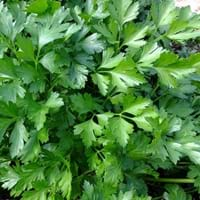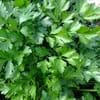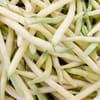Life Span
Annual or Biennial
Biennial and Perennial
Origin
Southern Europe
Europe, Western Asia
Types
Not Available
Not Available
Habitat
Subtropical climates, Temperate Regions
waste ground, wastelands
USDA Hardiness Zone
5-9
4-9
Sunset Zone
A3, 1a, 1b, 2a, 2b, 3a, 3b, 4, 5, 6, 7, 8, 9, 10, 11, 12, 13, 14, 15, 16, 17, 18, 19, 20, 21, 22, 23, 24
A1, A2, A3, H1, H2, 1a, 1b, 2a, 2b, 3a, 3b, 4, 5, 6, 7, 8, 9, 10, 11, 12, 13, 14, 15, 16, 17, 18, 19, 20, 21, 22, 23, 24
Habit
Clump-Forming
Rosette/Stemless
Flower Color
Yellow green
Yellow
Flower Color Modifier
Bicolor
Bicolor
Fruit Color
Sandy Brown
Brown, Black
Leaf Color in Spring
Green, Dark Green
Green
Leaf Color in Summer
Green, Dark Green
Green
Leaf Color in Fall
Green, Dark Green
Green
Leaf Color in Winter
Not Available
Not Available
Leaf Shape
Pinnate
Pinnate
Plant Season
Spring, Summer, Fall
Summer
Sunlight
Full Sun, Partial Sun
Full Sun
Type of Soil
Loam, Sand
Loam
The pH of Soil
Neutral
Neutral
Soil Drainage
Well drained
Well drained
Bloom Time
Early Summer, Summer
Summer
Tolerances
Drought
Drought
Where to Plant?
Ground
Ground, Pot
How to Plant?
Seedlings, Transplanting
Seedlings
Plant Maintenance
Medium
Medium
Watering Requirements
Average Water Needs, Requires regular watering
Average Water Needs, Do Not over Water, Keep the ground moist but not water-logged
In Summer
Lots of watering
Lots of watering
In Spring
Moderate
Moderate
In Winter
Average Water
Average Water
Soil Type
Loam, Sand
Loam
Soil Drainage Capacity
Well drained
Well drained
Sun Exposure
Full Sun, Partial Sun, Partial shade
Full Sun
Pruning
Remove damaged leaves, Remove dead branches, Remove dead leaves
Remove damaged leaves, Remove dead branches, Remove dead leaves
Fertilizers
All-Purpose Liquid Fertilizer
All-Purpose Liquid Fertilizer
Pests and Diseases
bees, Birds, Caterpillars, Red blotch
Aphids, Armyworm, Cutworms, Downy mildew, Pitch canker, Red blotch
Plant Tolerance
Drought
Drought
Flower Petal Number
Single
Not Available
Fragrant Bark/Stem
Yes
Yes
Foliage Texture
Medium
Fine
Foliage Sheen
Glossy
Matte
Attracts
Butterflies
Butterflies
Allergy
Anaphylaxis, angioedema, Rhinitis
Stomach burn
Aesthetic Uses
Not Available
Not Available
Beauty Benefits
Not Available
Blood purifying, Good for skin
Environmental Uses
Air purification
Air purification
Medicinal Uses
Antioxidants, Vitamin A, Vitamin B, Vitamin K
Aphrodisiac
Part of Plant Used
Leaves, Stem
Root
Other Uses
Used as a nutritious food item, Used for its medicinal properties
Food for animals, Used as a nutritious food item
Used As Indoor Plant
Yes
Yes
Used As Outdoor Plant
Yes
Yes
Garden Design
Edible, Herb, Vegetable
Edible, Herb, Vegetable
Botanical Name
PETROSELINUM crispum 'Afro'
PASTINACA sativa
Common Name
Parsley
Parsnip
In German
Petersilie
Pastinake
In Spanish
Perejil
Chirivía
In Greek
Μαϊντανός
Είδος δαυκίου
In Portuguese
Salsa
cherivia
In Polish
Pietruszka
Pasternak
Phylum
Tracheobionta
Magnoliophyta
Class
Magnoliopsida
Magnoliopsida
Genus
Petroselinum
Abelia
Clade
Angiosperms, Asterids, Eudicots
Angiosperms, Asterids, Eudicots
Tribe
Not Available
Not Available
Subfamily
Not Available
Not Available
Number of Species
Not Available
Not Available
Importance of Parsley and Parsnip
Want to have the most appropriate plant for your garden? You might want to know the importance of Parsley and Parsnip. Basically, these two plants vary in many aspects. Compare Parsley and Parsnip as they differ in many characteristics such as their life, care, benefits, facts, etc. Every gardener must at least have the slightest clue about the plants he wants to plant in his garden. Compare their benefits, which differ in many ways like facts and uses. The medicinal use of Parsley is Antioxidants, Vitamin A, Vitamin B and Vitamin K whereas of Parsnip is Aphrodisiac. Parsley has beauty benefits as follows: Not Available while Parsnip has beauty benefits as follows: Not Available.
Compare Facts of Parsley vs Parsnip
How to choose the best garden plant for your garden depending upon its facts? Here garden plant comparison will help you to solve this query. Compare the facts of Parsley vs Parsnip and know which one to choose. As garden plants have benefits and other uses, allergy is also a major drawback of plants for some people. Allergic reactions of Parsley are Anaphylaxis, angioedema and Rhinitis whereas of Parsnip have Stomach burn respectively. Having a fruit bearing plant in your garden can be a plus point of your garden. Parsley has no showy fruits and Parsnip has no showy fruits. Also Parsley is not flowering and Parsnip is not flowering . You can compare Parsley and Parsnip facts and facts of other plants too.





